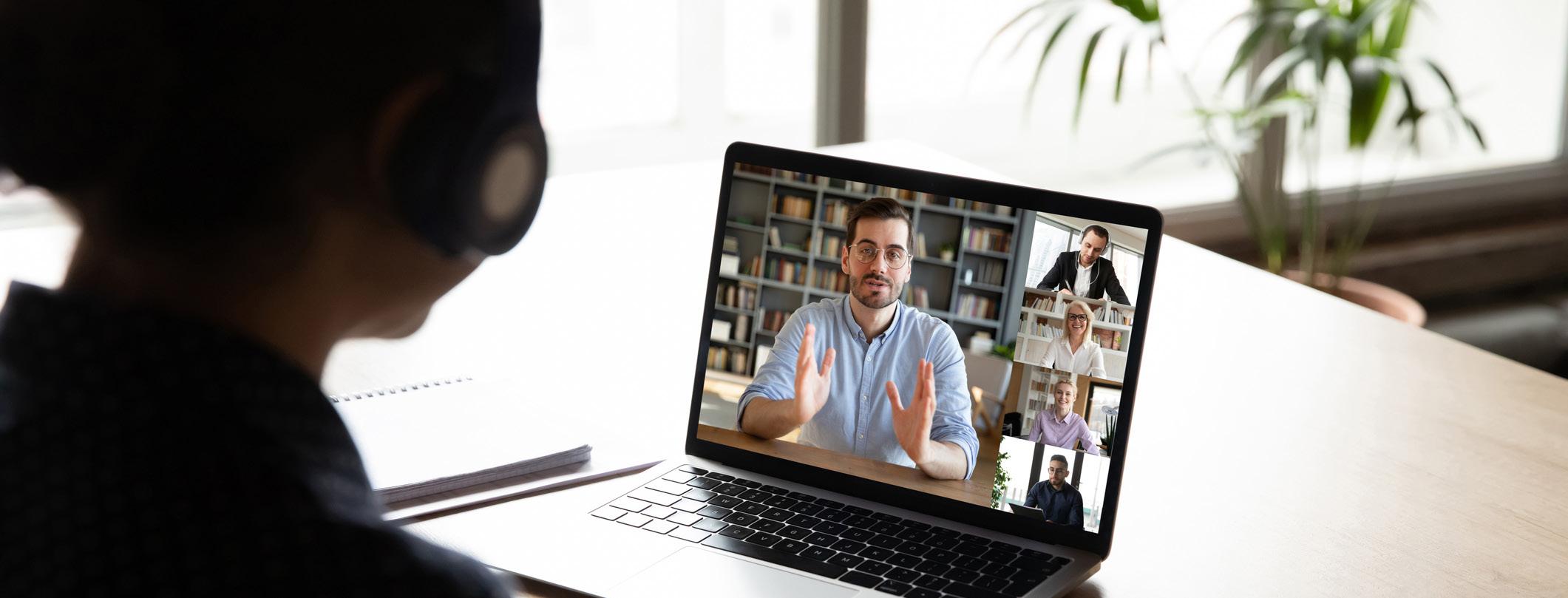
4 minute read
How the pandemic has changed the future of local businesses
PHOTO: iStockphoto. com/fizkes
Adjusting to the “new norm” How the pandemic has changed local businesses
Sherri Huleatt
Change is an essential part of business. However, nothing ushered in change as drastically or quickly as the COVID19 pandemic, which forced businesses big and small to ask themselves how they would keep their employees and customers safe during a pandemic—and beyond that, how they would stay profitable.
Brick and mortar retail stores were one of the few places where large groups still gathered, which meant that implementing new social distancing standards—such as new signage and barriers that keep people 6 feet apart—was key to keeping people safe.
Sam Crawford, sales manager of Westside Building Supply in Lynden, said that after rolling out new social distancing standards, his team has a heightened awareness of how much contact they have with the public, as well as how aisle widths, counter depths and in-store traffic flow can increase that contact and help spread germs and illness. Since enacting new standards, Crawford said his team has never been healthier, without so much as a cold among them.
“This may be a silver lining to this pandemic—that we may have less workplace illness due to being more diligent about virus spread,” Crawford said.
Westside also had to quickly adjust the store’s operating hours to accommodate employees who suddenly couldn’t work, such as those particularly vulnerable to COVID-19 because of health issues or parents whose child care had become unavailable due to the pandemic.
The food industry also has made major changes. Matt Brawner, owner and managing partner of Övn, a wood-fired pizza restaurant in Fairhaven, said ensuring his staff feel safe at work and treating them like active stakeholders have been paramount. “When determining what services we will offer, how we will offer them, and what our production and service environments look like, we are prioritizing what our employees want by asking them, rather than first asking our guests,” Brawner said. “Usually it is the other way around.”
This is one of the reasons Övn isn’t offering “curbside” pickup. Instead, the restaurant is offering “contact-free” pickup, in which employees leave orders on a table for customers to retrieve. Brawner also has supported his wait staff by implementing a new service fee that ensures they get tipped.
And while food deliveries were already popular through national services such as Uber Eats and Grubhub, as well as local services such as VikingFood, they’ve skyrocketed since the start of the pandemic.
In fact, as soon as Brawner heard restaurant dining rooms might close in Washington state, he started training frontline staff to offer in-house deliveries—a way for Övn to remain competitive without cutting into profits from pay
ing third-party delivery fees, he said. Brawner said the pandemic’s impact goes beyond delivery options, though. “Restaurant owners need to take the reins and figure out what the new ‘hospitality’ looks like,” he said. “Customers will be yearning for familiar experiences, but that’s not exactly on the table.” Brawner said restaurants will need to weigh public safety with profitability to ensure their staff and customers stay safe and healthy—even if it means going against the expected restaurant experience.Technology also has changed the way local businesses operate during the pandemic. A “Zoom Happy Hour,” for example, was relatively unheard of at the beginning of 2020, but now such events are staples of stay-at-home socializing.
For some businesses, technological change was inevitable; the virus just spurred the change sooner than expected.“Our industry is and has always been changing rapidly,” said Mike Parry, co-owner and general manager at Bellwether Real Estate. “Brick and mortar models were already starting to fade a bit pre-COVID-19, so that made more virtual and remote options more accessible.”
Video calls have helped Bellwether maintain a sense of community with its customers and camaraderie with its employees. “Utilizing Zoom has been fun,” said Jordan Hedlof, managing broker at Bellwether Real Estate. “We’ve incorporated virtual Mastermind sessions, happy hours and sales meetings for our team.” Beyond technology, help also has come in the form of the Coronavirus Aid, Relief, and Economic Security Act—or CARES Act—which included $349 billion in federal funds for the Paycheck Protection Program.
Both Bellwether Real Estate and Övn were approved for the PPP. Threefourths of the loan covers employee wages for eight weeks, with the remaining quarter covering other operating expenses, such as utilities and rent.
Regardless of the hardships faced by local businesses, they seem to be on the same page about one thing: “Like everyone else, we want to keep our employees and customers safe and hopefully move on from this pandemic as soon as possible,” Crawford said. ■
Enjoy Your Summer

2034 James St Bellingham Exit 254 360.734.6140 M-F 7am-6pm Sat 7am-5:30pm HardwareSales.net
Equipment Rentals 360.734.6141 Service Center 360.733.4256
without Suffering the Heat!

Turn Your Home into a Cool, Breezy Oasis with Fans & A/C Units from Hardware Sales!







